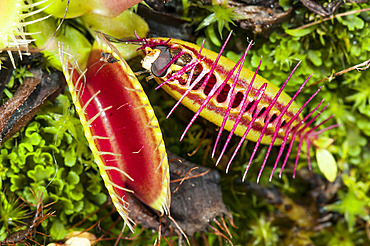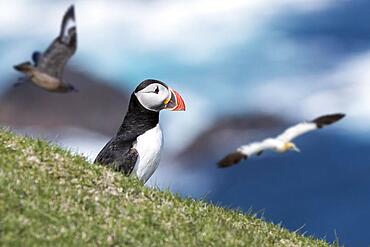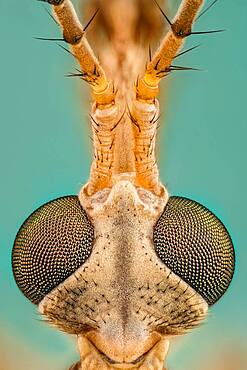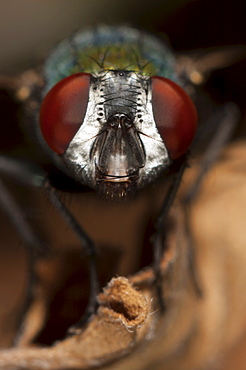Recent searches
Loading...
860-292030 - Great tit (Parus major) feeding on a dyke, France
860-291540 - Fly caught in a trap of Venus flytrap (Dionaea muscipula), carnivorous plant native to N Carolina, Jean-Marie Pelt Botanical Garden, Nancy, Lorraine, France
832-398657 - Atlantic puffin (Fratercula arctica) on sea cliff top and great skua chasing gannet in seabird colony, Shetland Islands, Scotland, UK
832-396851 - Hot air balloons over lush green landscape and blue sky
832-397028 - Spotted woolly hawk moth (Bombylius discolor), flying, Hesse, Germany, Europe
832-397029 - Spotted woolly hawk moth (Bombylius discolor), flying, Hesse, Germany, Europe
832-395392 - Composition, giant mosquito on traffic sign, mountain lake, Canada, North America
832-395211 - House fly (Musca domestica), macro photo, magnification ABM 5 :1, Hesse, Germany, Europe
832-392745 - Fly (Brachycera) on tulip (Tulipa), Altona, Hamburg, Germany, Europe
1349-536 - Aedes triseriatus Mosquito, West Nile Vector
1349-541 - Anopheles gambiae Mosquito, Malaria Vector
1349-540 - Anopheles stephensi Mosquito, Malaria Vector
1350-677 - Tipula is a very large insect genus in the fly family Tipulidae. They are commonly known as crane flies or daddy longlegs. Worldwide there are well over a thousand species.
1350-645 - Episyrphus balteatus, sometimes called the marmalade hoverfly; like most other hoverflies it mimics a much more dangerous insect, the solitary wasp, though it is a quite harmless species
1350-676 - Tipula is a very large insect genus in the fly family Tipulidae. They are commonly known as crane flies or daddy longlegs. Worldwide there are well over a thousand species.
1350-670 - As their common name suggests, they are often seen hovering or nectaring at flowers; the adults of many species feed mainly on nectar and pollen, while the larvae (maggots) eat a wide range of foods.
1350-678 - The sponging mouthparts consist of a fleshy, elbowed labium, at the distal end of which are large, sponge-like organs called the labella (singular, labellum). The labella is a complex structure consisting of many grooves, called pseudotrachea, which sops up liquids much like a sponge does.
1350-634 - A Musca domestica or house fly showing a severe mite infestion; three mites under the subgenal area and two more between labellum and thorax. Those mites show a bright red colour and finger-print like texture
1350-679 - The Mediterranean fruit fly, Ceratitis capitata, is one of the world's most destructive fruit pests.
1350-673 - The Tachinidae are a large and variable family of true flies within the insect order Diptera, with more than 8,200 known species and many more to be discovered. Most are protelean parasitoids, or occasionally parasites, of arthropods.
1350-639 - A Longlegged fly; they will catch your attention with their bright green metallic eyes
832-387647 - Little egret (Egretta garzetta), flying at sunset, Parc Naturel Regional de Camargue, France, Europe
746-68167 - Musca autumnalis, face fly or autumn house-fly
746-68166 - Musca autumnalis, face fly or autumn house-fly
746-68213 - Tabanus autumnalis, large marsh horsefly
746-68162 - Lucilia sericata, Common green bottle fly
832-369944 - Stinkhorn (Phallus impudicus) with a stench that attracts flies
1001-381 - Fly, Diptera (True flies), North West Bulgaria, Bulgaria, Europe
1001-376 - Fly, Diptera (True flies), North West Bulgaria, Bulgaria, Europe
1001-136 - Fly (Diptera) (true flies), North West Bulgaria, EuropeOrder Diptera (True flies)
1001-312 - Fly (Diptera) (true flies), North West Bulgaria, Europe
1001-179 - True flies (Diptera), North West Bulgaria, Europe
1001-165 - True flies (Diptera), North West Bulgaria, Europe
1001-284 - Mating dance of flies (Diptera) (true flies), North West Bulgaria, Europe
1001-304 - Fly (Diptera) (true flies), North West Bulgaria, Europe
1001-255 - Hoverfly (Syrphidae), North West Bulgaria, EuropeOrder Diptera (true flies);Sub-order Cyclorrhapha
1001-256 - Fly (Diptera) (true flies), North West Bulgaria, Europe
1001-301 - Hoverfly (Syrphidae), North West Bulgaria, EuropeOrder Diptera (true flies);Sub-order Cyclorrhapha
1001-310 - Fly (Diptera) (true flies), North West Bulgaria, Europe
1001-243 - True flies (Diptera), North West Bulgaria, Europe
1001-260 - Fly (Diptera) (true flies), North West Bulgaria, Europe
1001-349 - Crane fly (Tipulidae) on violet leaf, North West Bulgaria, EuropeOrder Diptera (true flies);Sub-order Nematocera
1001-139 - Fly (Diptera) (true flies), Bettel, Luxembourg, Europe
1001-323 - Fly (Diptera) (true flies), North West Bulgaria, Europe
1001-360 - Bee fly (Bombyliidae), North West Bulgaria, EuropeOrder Diptera (true flies);Sub-order Brachycera
1001-291 - Hoverfly (Syrphidae) (Diptera), North West Bulgaria, EuropeOrder Diptera (true flies);Sub-order Cyclorrhapha
1001-155 - Crane fly (Tipulidae), Bettel, Luxembourg, EuropeOrder Diptera;Sub-order Nematocera
1001-292 - Hoverfly (Syrphidae), North West Bulgaria, EuropeOrder Diptera (true flies);Sub-order Cyclorrhapha
1001-152 - Bee fly (Bombyliidae), Bettel, Luxembourg, EuropeOrder Diptera (true flies);Sub-order Brachycera
1001-266 - Fly (Diptera) (true flies), North West Bulgaria, Europe
1001-279 - Hoverfly (Syrphidae), North West Bulgaria, EuropeOrder Diptera (true flies);Sub-order Cyclorrhapha
1001-283 - Hoverfly (Syrphidae), North West Bulgaria, EuropeOrder Diptera (true flies);Sub-order Cyclorrhapha
1001-138 - Fly (Diptera) (true flies), Bettel, Luxembourg, EuropeOrder Diptera
1001-182 - True flies (Diptera), North West Bulgaria, Europe
1001-161 - Mating crane flies (Tipulidae), Bettel, Luxembourg, EuropeOrder Diptera (True flies);Sub-order Nematocera
1001-209 - True flies (Diptera), North West Bulgaria, Europe
1001-343 - Fly (Diptera) (true flies) and ladybird (ladbybug) (Coccinellidae) on violet leaf, North West Bulgaria, Europe
1001-324 - Fly (Diptera) (true flies), North West Bulgaria, Europe
1001-184 - True flies (Diptera), North West Bulgaria, Europe
1001-249 - Fly (Diptera) (true flies), North West Bulgaria, Europe
832-61343 - Autumn crocus, Meadow saffron, Naked lady (Colchicum speciosum) with hoverfly, Haren, Emsland region, Lower Saxony, Germany, Europe
832-29157 - Hoverflies, (Episyrphus balteatus) and bees (Api mellifera) on aromatic aster blossom (Aster oblongifolius)
832-31515 - Robber Fly (Asilidae), Grasse, Alpes-Maritimes, France, Europe
832-36738 - Marbled Grey Flesh Fly (Sarcophaga carnaria)
832-30109 - Robber Fly (Asilidae), adult with grasshopper prey, Starr County, Rio Grande Valley, Texas, USA
1198-5 - Hover-fly (Volucella species) close-up of head, Oxfordshire, UK
832-7963 - Robber Fly (Asilidae), adult, Rio Grande Valley, Texas, USA
You reached the end of search results






























































































